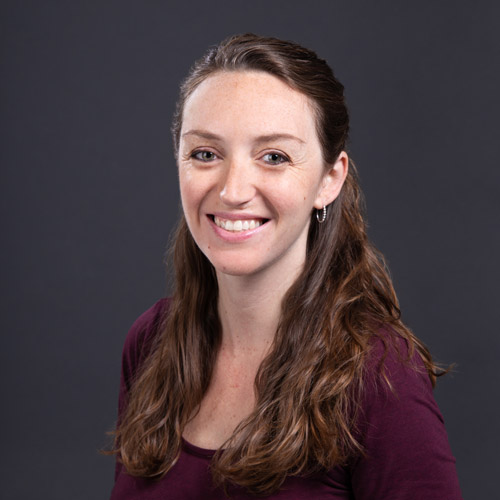Boston Red Sox, Behind the Lens
Michael Ivins (COM’01) captures moments on and off the field
Photographer Michael Ivins was on deadline. He needed an exceptional shot for a photo spread in Red Sox Magazine, and with the magazine about to go to press, the clock was ticking. Worse, there was only one player on the field, lefty reliever Hideki Okajima, and he didn’t even have his glove on.
Ivins watched as Okajima calmly drew his hands together, stretched his fingers wide, then brought his hands under his chin and raised his head to the sky. Ivins thought he appeared to be praying. He lay on the ground and aimed his camera upward, framing his subject against a moody gray sky. The picture was perfect. And it was on deadline.
Okajima was probably just stretching his hands, Ivins says. “But I was really pleased how this photo is so powerful; it made something out of nothing.”
As manager of photography for the Boston Red Sox, Ivins (COM’01) is responsible for all things photo. He shoots home games and away games. He shoots player portraits, magazine photo shoots, charity events, and the day-to-day bustle of Fenway. He’s currently working on a massive archival photo research project—organizing the team’s collection of photographs, many to be published next year in a book commemorating Fenway Park’s 100th anniversary.
“It’s a dream job,” says the athletic 31-year-old Connecticut native, adjusting his ever-present Ray-Bans. “I love the fans, the atmosphere, the travel, and coming to work at Fenway Park every day. As the season goes on and on, there’s a buzz in the air that really keeps me going.”
Career beginnings
Ivins studied photojournalism at the College of Communication and later managed the COM photo lab. An internship at Boston Magazine was a turning point. “When I was there they were really focusing on their ‘Best of Boston’ issue,” he says. “I had to shoot a ton of stuff, and I got seven or eight photographs published in the magazine. It inspired me to become a professional.”
He freelanced for local newspapers and eventually landed gigs with the Boston Herald, Reuters, and the European Pressphoto Agency. “I developed a professional sports portfolio,” he says, “and I got my foot in the door because I always made myself available.”
In 2008, Ivins heard about the Red Sox position from a friend and applied immediately. He met with team president and CEO Larry Lucchino (Hon.’08), who seemed impressed by Ivins’ ability to juggle multiple jobs. “I don’t shy away from hard work,” he told Lucchino. He was hired that day.

Timing the perfect shot
Ivins says the biggest challenge for sports photographers is freezing a moment that’s over in milliseconds. The best way to get the shot, he says, is to lie in wait.
“You certainly can’t follow the ball, because it’s moving too fast,” he says. “If you want to capture something like a diving catch, you really have to be trained on the fielder already, hoping that the ball is coming their way. Sometimes it works out, and sometimes you’re just waiting and waiting.”
Ivins’ camera of choice is a Nikon D3S, and he switches lenses from a long 400 mm and a smaller 14 mm to cover both wide and close-up shots. The equipment—a fanny pack filled with lenses, extra batteries, and memory cards—is heavy, and he appreciates the ease of navigating Fenway Park, which is much smaller than venues like Yankee Stadium.
Being one of Boston’s most sought-after sports photographers has its perks, like this past spring’s recent opportunity to shoot the Stanley Cup finals at TD Garden. Ivins also gets to see parts of Fenway that most fans can only imagine—roof spots, the dugout, behind the manually operated scoreboard, not to mention scoring face time with Theo, Big Papi, and Papelbon. When music groups like Aerosmith and the Dave Matthews Band perform at the historic park, he shoots them, too. And a favorite annual assignment is going up in a helicopter for shots of Fenway and the Boston skyline for the Sox photo collection.
And the downside? “Plenty of my shots have been ruined by the hot dog vendors walking up and down the aisles.”

This article was originally published on June 20, 2011.

Comments & Discussion
Boston University moderates comments to facilitate an informed, substantive, civil conversation. Abusive, profane, self-promotional, misleading, incoherent or off-topic comments will be rejected. Moderators are staffed during regular business hours (EST) and can only accept comments written in English. Statistics or facts must include a citation or a link to the citation.